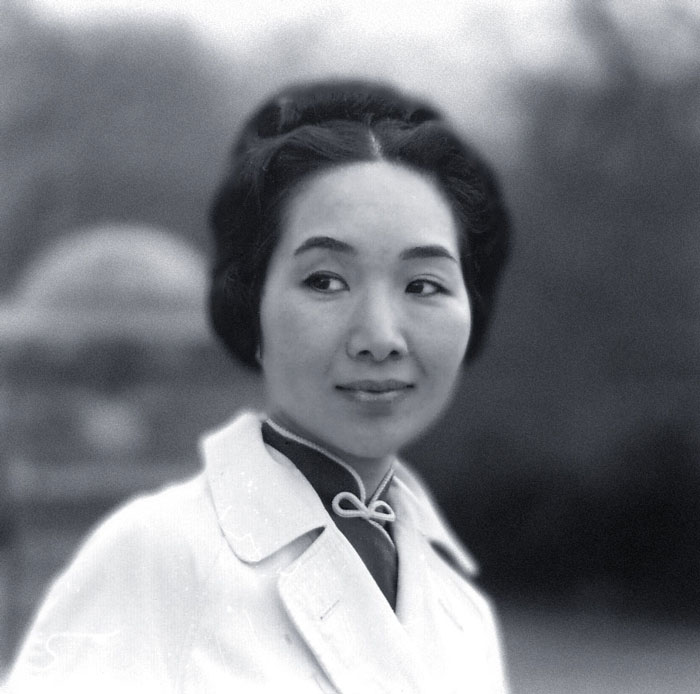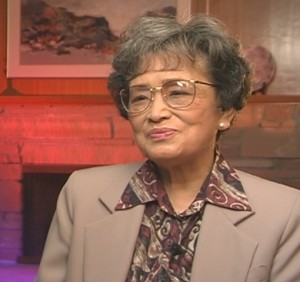![]()
This is a pretty good interview with Nicholas Kristof, discussing race, inequality, privilege and the inability to perceive that privilege among white people in the United States. Comedian Bill Maher recently made a joke, that the idea of white Christians being an oppressed group today, which is being attacked on all sides, is bewildering, because there are no articles and videos of white pastors and priests being brutally attacked and sometimes killed by cops with itchy trigger fingers. Privilege comes in so many forms, and part of its power and the reason it is so difficult to give up, is because as a regime of knowledge and power, it comes equipped with ways of projecting blame elsewhere, or doing everything possible to justify and mystify it, even to the point of taking ludicrous positions that in any other context, you would see as being shameful and embarrassing. It is easy to not realize the ways in which the color of your skin privileges and protects a person, at so many different levels, because part of having great privilege is playing of games of imagining that it doesn't exist, or that all your great power and flexibility comes simply because you are better, or because you worked for it, fought for it etc. In order to protect that privilege, we see things such as the Trump campaign. In so many ways, the Trump campaign is a manifestation of the twisted world view of
Fox News, whose business model is build on feeding off of white privilege, defending and protecting it, and attacking anything that might challenge it. The spaces of Trump rallies, are places where people can go, to truly inhabit their fantasies that they conjure up in order to deny their privilege and instead pretend that somehow, those who belong to what cartoonist Tom Tomorrow referred to as probably the most privilege group at any point in human history (white Christian Americans, and males in particular), are the real oppressed group, those who are really suffering and losing in today's America. But what they are angry about, what they are desperate to find again and willing to yell down or cut down anyone their path to secure again, is that feeling of unmarked, unquestioned privilege. It never truly existed, but there is always a nostalgia, that prior to the other gaining the White House, prior to them gaining respect or recognition, prior to them having rights, prior to them having the ability to speak or vote, we got what we wanted and no one dared to question us.
*********************
By Emily BadgerNovember 20, 2014The Washington Post Since the death of Michael Brown in Ferguson this summer, New York Times columnist Nicholas Kristof has been running a provocative series on the lingering barriers blacks face in America. The title of the series:
"When Whites Just Don't Get It."Each column has data on the
wealth gap between blacks and whites, the disparate rates at which black boys are expelled
and black men imprisoned, the historic discrimination that helped drive
widely diverging rates of black and white homeownership today.
And each column has been met with, well, deep resistance to the very idea that modern racial inequality is about anything more than differences between people willing to work hard and those who won't. To Kristof's credit, he keeps coming back with
more data,
more counter-arguments.
He's taken on a particularly unpopular task: trying to convince whites who've often inherited opportunity that America has just as systematically passed on disadvantage to blacks.
"One element of white privilege today," Kristof
wrote this weekend, "is obliviousness to privilege, including a blithe disregard of the way past subjugation shapes present disadvantage."
Curious how that uncomfortable idea has gone over, I spoke with Kristof this week about the series, which was a reaction to a column suggesting that
even well-meaning people may experience some unconscious racism.
"I was struck by the reaction to that: How many whites were very indignant at the idea that there is a problem even with unconscious racism in America in 2014," Kristof says in our conversation. "The tone of the responses really struck me. That led to the first one, '
when whites just don’t get it.' And the response to each one led to the next."
Below is a slightly condensed transcript.EB: Part of what people don’t seem to get is not just their own unconscious bias, but chapters of history. They’re unaware, for example, of the history of federal policy explicitly discriminating against blacks in mortgage lending, and what that has to do with wealth today.
NK: People think they know about black history if they know about Martin Luther King. There is a celebratory tone to the way whites understand African-America history, which is of amazing, breathtaking progress. That is truly real, that
is to be celebrated. But I think whites tend to be less aware of the degree to which past discrimination shapes present inequity, and also the degree to which in some spheres, African-Americans — and probably, especially young black men — face continuing bias in law enforcement and the justice system and employment and many other areas.
Among all the e-mails and tweets and Facebook comments you’ve been getting, do you have any sense that you’re changing minds, at least among some people?I wish I could say that yes, it’s having an effect. I honestly don’t know. In general, I think that we in journalism tend to change people’s minds quite rarely on issues that they have thought of. We tend to have an impact most as shapers of the agenda. But where there’s an issue already on the agenda, like race, I think it’s pretty unusual that we manage to change people’s minds. The people who respond to the series, I would say they don’t show much sign of having changed their minds, whichever side they may be on. But it’s also true that those people may be more passionate, more informed, and perhaps less likely to have their views changed.
My hope is that I’m reaching people, especially young people who don’t know a lot about these issues, and haven’t particularly thought about them. Perhaps to some degree, I can at the margin affect their view a little bit.
How often do you hear the response that “we have a black president, so how can there be a problem”?That has been a fairly common theme. That goes into the triumphalist narrative of black history that I often hear from whites. There’s obviously something to that, it’s an incredible milestone. But it can’t be used to obscure the fact that there’s still enormous inequity facing so many other people.
Do you ever feel like that one fact that people can point to — "the president is black!"— makes it harder to have this larger conversation about racial inequality?I’ve wondered about that, whether that actually becomes an impediment to having a serious conversation about racial inequity. I do think humans have an incredible ability to self-select facts that will fit their narrative. Even if that had not happened, then people would say "well, the reason we haven’t had many black officials is just that too many blacks don’t show personal responsibility, and that’s the source of the problem." I’m just not sure it would really be that different if we didn’t have a black president. But certainly one hears that all the time, as "this is the end of the argument. There’s no point in looking backward now. A black guy who really tries will be treated so fairly by white people in American today that he’ll be elected president."
You just touched on one of the themes you raise repeatedly in these columns — personal responsibility. You write about the idea that it’s a lot easier for many people to say "blacks should take more personal responsibility" than to say "whites have some responsibility here, too."That surprised me a little bit just how much of the critical reaction that I got was based on the "personal responsibility" narrative. That was overwhelmingly the most common perspective that I got.
—that people who don’t succeed in life don’t succeed for lack of their own responsibility?Exactly. That just comes up over and over and over. And it’s something that resonates with me a little bit because I grew up in rural Oregon, in a blue-collar area that has been very hard hit by meth, by family breakdown, by unemployment. And a lot of my friends and classmates have been struggling with all these issues. There is a real issue of personal responsibility and self-destructive behaviors — this is real. But it also arises from a context of hopelessness, a context in which people feel that there’s no escape, and then they self-medicate. And then that hopelessness becomes self-fulfilling. And that’s true of whites, and that’s true of blacks.
You've cited a lot of data in these columns that seems pretty powerful and hard to argue with. People were very taken aback by the figure in particular that the wealth gap between whites and blacks today in America is greater than the
black-white wealth gap was in Apartheid South Africa. That was a factoid that clearly shocked a lot of people. But then the lesson that a lot of people drew from it was "well, boy, that just underscores how irresponsible so many African-Americans are," which is precisely the opposite of the point I was trying to make. I think people were shocked by some of the data that I cited, but I don’t know that they were persuaded by it.
You use this phrase, which I’m sure a lot of people have reacted to, that whites have a “capacity for delusion” when it comes to thinking about their own role in racial inequality. I wonder whether that was impolitic of me, whether it just made people defensive. As a journalist, I see delusion all over, in all kinds of categories of people. So I’m kind of used to the idea that all kinds of people are deluded about themselves and about others. There are white delusions, and black delusions and Asian delusions, and wealthy-people delusions, and poor-people delusions. I probably didn’t intend to pack as much
umph into the phrase as it was received with.
But I think that there’s no doubt that successful people have this narrative that "I succeeded because I worked hard, studied hard, obeyed the law, and that just shows that anybody in this country can succeed if they will just behave themselves." I think about my friends growing up, who were in many cases, just as smart and hard-working as anybody else, but didn’t have a family that pushed them. So if they made the decision to drop out of school, that was a decisions that really haunted them. I think it’s really hard for people who were born on third base, and whose friends were born on third base, and who assume kind of a third-base context, it’s really hard to understand the enormous obstacles that face those who in early life encountered a much less rosy environment. It’s so easy to hit a home run from third base and say "boy, this is pretty easy, why can’t everyone else do this?"
Has writing about all of this made you think about advantages that you inherited, or ways that you were helped in your own life?Absolutely. One of the things that we talk about in our new book
‘A Path Appears’— that I had really been unaware of until we were going through the research — is just how much early childhood matters. Your mom not drinking or taking drugs during pregnancy. And in West Virginia, 20 percent of kids are born with drugs in their system. That’s just a totally different world. So I think that we tend to have the wrong metrics of poverty, and we tend to measure poverty in terms of income per person, or in terms of wealth per person. I truly think the better metrics of poverty would be how often a child is read to, how often a child is hugged, the kind of support a child is getting in the first five years or so of life.
I wonder if liberals like myself overuse the word "inequality" because that tends to connote inequality of outcomes, which conservatives are much less worried about. And we should use the word "inequality" less and the word "opportunity" more.
Do you think our ability to come up with policy solutions to racial inequality is dependent on convincing more people of these ideas that you say whites often don’t get? I think there are two kinds of arguments one can make for the policy solutions that matter. One are these kinds of equity or social-justice arguments.
We should do this because it’s the right thing to do.Exactly. "It’s fair, it’s right." For those arguments to succeed, one really does have to persuade people that these are real issues, and that it’s not just about responsibility. But there’s another kind of argument that I think one can make for the same kinds of policy solutions, which is that it saves money. It gets you bang for your buck.
It’s more cost-effective to invest in early childhood than to pay for welfare once that kid grows up.Right. James Heckman argues that to get the same increment of reduced crime, we can spend money on more policemen, or you can spend one-fifth the amount of money on
early education for at-risk kids. Oklahoma, which has been a
pioneer in some of these early interventions, has done so in part because it saves money. It’s a sensible thing.
I go back and forth in the arguments that I use, and I do think that it helps that we’re getting better data and better research. While liberals have always made some of these arguments, frankly, often the research wasn’t robust. Now, more and more it’s coming from randomized control trials, long-term follow-ups, really pretty solid evidence that it’s hard to argue about.
One of the great improvements in social justice in the last few years has been chipping away at mass incarceration, and the reason that mass incarceration is on the decline is not to do with social justice at all. It’s
because it’s expensive. So, I’ll use any argument that I think may help advance the cause.
Read more:Redefining the n-word: Examining a racial slur entrenched in American vernacular that is more prevalent than ever.![]()
Emily Badger is a reporter for Wonkblog covering urban policy. She was previously a staff writer at The Atlantic Cities.





















